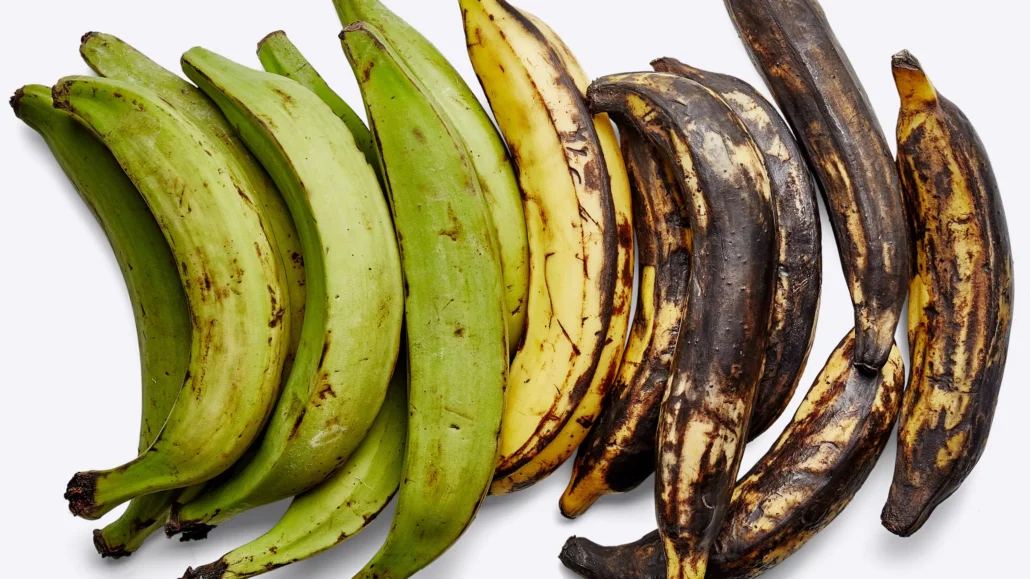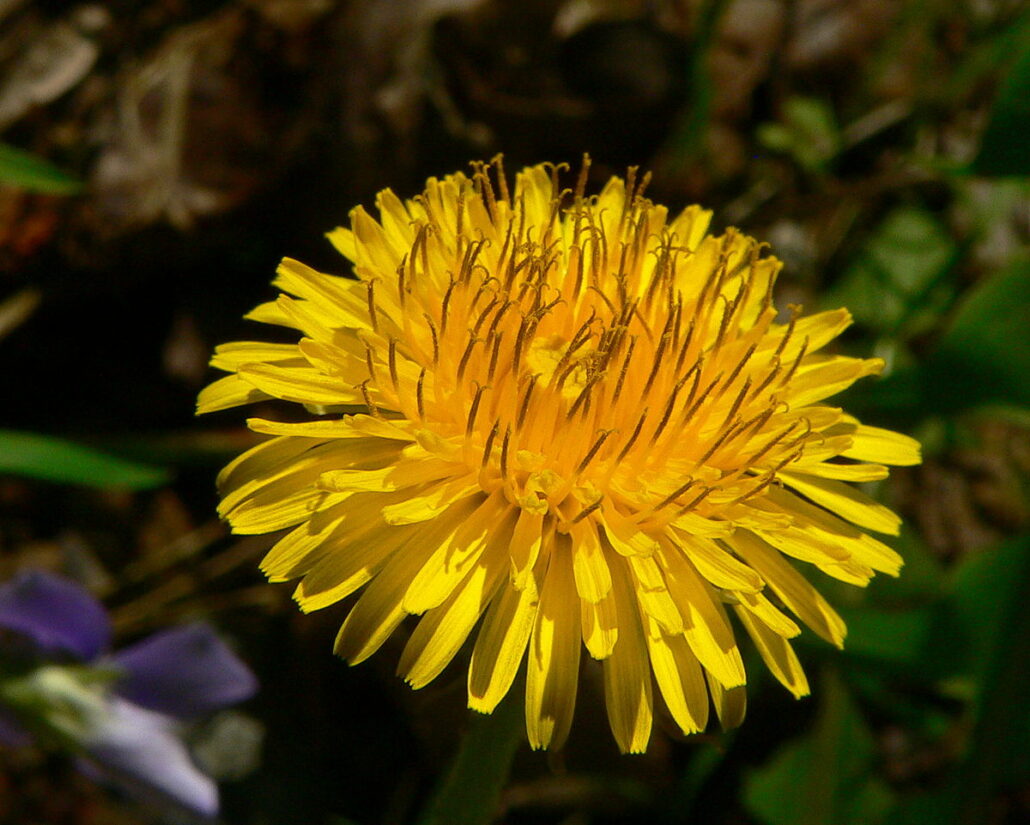In this article, I will introduce you to common edible wild plants that you can forage during early spring. Foraging for wild plants can help you fill the “hungry gap” between winter stores and the upcoming harvest. Before we begin, it’s important to follow foraging safety guidelines and respect the environment you forage in.
Key Takeaways:
- Foraging for edible plants can provide an abundant source of food.
- Early spring is a great time to start foraging for wild plants.
- Ensure you can correctly identify the plants before consuming them.
- Follow foraging safety guidelines to prevent any mishaps.
- Respect the environment you forage in by leaving no trace behind.
Foraging Tips: Stay Safe and Sustainable
Before you head out to forage, it’s important to keep in mind these essential tips to ensure a safe and sustainable experience. Whether you are a beginner or an experienced forager, following these guidelines will help you make the most out of your foraging adventures.
- Know What You’re Foraging: Never eat anything you can’t correctly identify. Familiarize yourself with the plants you intend to forage. Use reliable field guides or seek guidance from experienced foragers and experts.
- Avoid Contaminated Areas: Be aware of potential contaminants that may be present in the foraging area. Avoid collecting plants near polluted sites, busy roads, or areas treated with chemicals.
- Follow Local Regulations: Check the rules and laws regarding foraging in your area, as they may vary. Some public lands may have specific foraging guidelines or restrictions in place to protect the environment.
- Seek Permission: When foraging on private property or someone else’s land, it’s courteous to ask for permission before harvesting. Respect the landowner’s property rights and follow any guidelines they may provide.
- Take Only What You Need: Practice sustainable foraging by taking only what you need. Leave enough plants behind to ensure their continued growth and reproduction. Avoid excessive harvesting that could harm the plant populations or disrupt the ecosystem.
- Respect the Environment: Foraging should be done with utmost care and respect for the environment. Avoid causing any damage to plants, trees, or wildlife habitats. Leave no litter behind and dispose of any waste properly.
By following these foraging tips, you can enhance your foraging skills, ensure your safety, and contribute to the sustainable and responsible practice of wildcrafting.
Remember, a foraging guide is essential for accurate plant identification and gathering useful tips. Always prioritize your safety and the preservation of natural ecosystems.
Personal Reflection:
“Foraging has allowed me to deepen my connection with nature and discover the abundance that our environment provides. By adopting sustainable foraging practices, I can continue to enjoy the wonders of wildcrafting while respecting and nurturing the delicate ecosystems around me.”
| Foraging Tips | Benefits |
|---|---|
| Know what you’re foraging | Ensure safe consumption |
| Avoid contaminated areas | Protect your health |
| Follow local regulations | Respect the environment |
| Seek permission | Show courtesy and respect |
| Take only what you need | Promote sustainability |
| Respect the environment | Preserve ecosystems |
Nettles: Versatile and Nutritious Forage Food
Stinging nettles are a common and easily identifiable plant. The young, tender leaves are delicious and can be used as a spinach substitute in various recipes. You can also make nettle soup, nettle chips, nettle beer, and nettle tea. Remember to wear gloves when harvesting nettles and boil them to remove their sting.
Nettles are not only delicious but also highly nutritious. They are rich in vitamins A, C, and K, as well as minerals like iron, calcium, and magnesium. Their high protein content makes them an excellent choice for vegetarians and vegans. So, don’t let the stinging reputation scare you away from these amazing greens.
When foraging for young nettles, look for plants in spring when the leaves are still small and tender. The best time to harvest is before they start flowering. It’s important to wear gloves as the stinging hairs on the leaves can cause skin irritation.
Nettle Recipes
Nettles can be used in a variety of recipes to add a unique and delicious flavor. Here are a few ideas to get you started:
- Nettle Soup: In a large pot, sauté onions and garlic in olive oil. Add chopped nettles and vegetable broth. Simmer until the nettles are cooked. Blend the mixture until smooth and creamy. Season with salt and pepper.
- Nettle Chips: Toss young nettle leaves with olive oil and your choice of seasonings, such as salt, pepper, and paprika. Place them on a baking sheet and bake at 350°F (175°C) until crispy.
- Nettle Beer: Combine young nettle tops, sugar, lemon juice, and water in a large pot. Bring to a boil and simmer for 30 minutes. Strain the mixture and let it cool. Add yeast and let it ferment for a few days. Bottle the beer and let it continue fermenting for about a week before enjoying.
Nettle Tea
Nettle tea is not only delicious but also offers a range of health benefits. It is known for its detoxifying properties and can help relieve allergies and inflammation. To make nettle tea, follow these simple steps:
- Harvest young nettle leaves using gloves to protect yourself from stings.
- Wash the leaves thoroughly to remove any dirt or insects.
- Place the leaves in a teapot or a heatproof container.
- Pour boiling water over the leaves and let them steep for 5-10 minutes.
- Strain the tea and enjoy hot or cold.
Nettle tea can be enjoyed on its own or combined with other herbs like mint or chamomile for added flavor.
| Nettle Nutrition Facts | Amount per Serving (100g) |
|---|---|
| Calories | 42 |
| Protein | 3.3g |
| Fat | 0.1g |
| Carbohydrates | 7.6g |
| Fiber | 2.4g |
| Vitamin A | 4815 IU |
| Vitamin C | 33mg |
| Vitamin K | 512μg |
| Calcium | 481mg |
| Iron | 2.7mg |
Nettles are a versatile and nutritious forage food that can be easily incorporated into your diet. From delicious nettle recipes to soothing nettle tea, these plants offer a range of flavors and health benefits. So, put on your gloves and head out to discover the wonders of young nettles!
Dandelions: Bitter Greens with Many Culinary Uses
Dandelions are not just pesky weeds that invade our lawns; they are also incredibly versatile and nutritious plants that can be foraged and used in various ways in the kitchen. While the leaves of dandelions may have a bitter taste, they can be transformed into delicious dishes when prepared properly.
One of the most popular uses of dandelions is in salads. The young, tender leaves can be harvested and mixed with milder greens to balance out the bitterness. Edible dandelion greens add a unique flavor and texture to salads, making them a refreshing and nutritious option for springtime meals.
If salads aren’t your thing, you can also try stir-frying the dandelion greens with other vegetables. Sautéing them in a little olive oil and garlic can help mellow out the bitterness while bringing out their earthy flavors. The result is a tasty and nutrient-packed side dish that pairs well with grilled meats or roasted vegetables.
But the culinary uses of dandelions don’t stop at the leaves. The roots of dandelions can be harvested and used to make a drink called dandelion root coffee. The roasted and ground roots can be brewed to create a caffeine-free beverage that resembles coffee in taste and aroma.
In addition to coffee, the roots can also be cooked and enjoyed as a root vegetable. They can be boiled, mashed, or even roasted to create a unique and flavorful side dish. The taste of the cooked dandelion roots is slightly bitter but also earthy and nutty, making them a great addition to your culinary repertoire.
Health Benefits of Dandelions
Dandelions are not only delicious but also packed with nutrients. They are rich in vitamins A, C, and K, as well as minerals like iron, calcium, and potassium. Additionally, dandelions are a good source of antioxidants, which can help to combat inflammation and protect against chronic diseases.
Furthermore, dandelion greens are known for their potential detoxifying properties. They may help support liver health and aid in digestion. So, by incorporating dandelions into your diet, you are not only adding unique flavors to your meals but also boosting your overall health.
Recipe: Stir-Fried Dandelion Greens with Garlic
| Ingredients | Instructions |
|---|---|
|
|
Stir-fried dandelion greens make a quick and easy side dish that pairs well with a variety of main courses. The garlic enhances the flavors of the greens, making it a tasty and nutritious addition to any meal. Give it a try and discover the delights of dandelions in your kitchen!
Ramps and Wild Leeks: A Springtime Delicacy
Ramps, also known as wild garlic or wild leeks, are aromatic and tasty. In Europe, ramps refer to wild garlic, while in the US, it refers to wild leeks. The leaves of wild leeks resemble leeks or onion and have a mild, sweet flavor. They can be used in salads and various savory dishes.
To ensure you forage the right plants, it’s important to know how to identify ramps and wild leeks correctly. Here are some distinguishing features:
- The leaves are broad and smooth, similar to lily of the valley but with a distinct garlicky smell.
- The bulbs are small and elongated.
- The flowers are white, blooming in late spring.
- Ramps grow in clusters, and wild leeks have a single leaf emerging from the bulb.
Proper identification is crucial to avoid any potential dangers or consuming look-alike plants. To get started with ramps foraging, here’s a simple recipe using wild leeks:
Sautéed Ramps with Butter
“The mild, sweet flavor of ramps shines through in this simple yet flavorful dish. The butter adds a rich, creamy finish.”
Ingredients:
- 1 bunch of ramps, cleaned and trimmed
- 2 tablespoons of unsalted butter
- Salt and pepper to taste
Instructions:
- In a skillet, melt the butter over medium heat.
- Add the ramps and sauté until they become tender, approximately 5-7 minutes.
- Season with salt and pepper to taste.
- Remove from heat and serve as a side dish or atop toast.
| Wild Leek Dishes | Level of Difficulty | Preparation Time |
|---|---|---|
| Wild Leek Quiche | Intermediate | 1 hour |
| Wild Leek Pesto | Easy | 15 minutes |
| Wild Leek Soup | Beginner | 30 minutes |
Discover the unique flavors of ramps and wild leeks with these delightful recipes. They are the perfect addition to your springtime dishes.

Garlic Mustard: A Tasty Invasive Species
While garlic mustard is an invasive species, it offers a delightful culinary experience. Its unique flavor profile combines the pungency of garlic with the slight bitterness of mustard greens, creating a truly memorable taste.
During spring, when garlic mustard is in its prime, you can forage the young leaves and tender stems to incorporate them into your dishes. By doing so, not only can you enjoy the delectable flavors, but you also play a role in controlling the spread of this invader.
There are numerous ways to utilize garlic mustard in your cooking. Its versatility allows you to experiment with various recipes and techniques. Here are a few ideas to get you started:
1. Garlic Mustard Pesto
Combine fresh garlic mustard leaves, garlic cloves, toasted nuts of your choice, Parmesan cheese, lemon juice, and olive oil in a food processor. Blend until smooth and use it as a flavorful spread or topping for pasta, sandwiches, or roasted vegetables.
2. Sautéed Garlic Mustard Greens
Heat some olive oil in a pan and sauté garlic mustard leaves with garlic, onions, and a pinch of red pepper flakes for a spicy kick. Season with salt and pepper, and enjoy as a side dish or mix it into your favorite stir-fry.
3. Garlic Mustard Soup
Create a comforting soup by simmering garlic mustard leaves with vegetable broth, onions, potatoes, and your choice of herbs and spices. Blend the mixture until smooth, and serve it hot with a swirl of cream for a touch of indulgence.
Incorporating garlic mustard into your recipes not only adds a unique flavor but also helps control its invasive nature. By foraging and using garlic mustard, we can make a positive impact on our environment while satisfying our taste buds.
Remember, when collecting garlic mustard, ensure you properly identify it to avoid any confusion with similar-looking plants. Take only what you need, leaving behind enough to allow for the plant’s continued growth. With responsible foraging practices, we can enjoy the deliciousness of garlic mustard while preserving the ecosystem.
Ground Elder: Overcoming Its Strong Taste
Ground elder, also known as bishop’s weed, is often considered a troublesome weed in gardens and lawns. However, it is worth noting that this plant has some culinary uses despite its strong taste.
The key to incorporating ground elder into your dishes is to harvest the plant when it’s young. The young shoots of ground elder have a parsley-like flavor that can be quite enjoyable when prepared correctly.
To tame the strong taste of ground elder, I recommend stir-frying the young shoots in olive oil. This cooking method helps to mellow out the flavor and allows its parsley-like notes to shine through. You can add some garlic or herbs for added complexity.
Ground Elder Stir-Fry Recipe
- Harvest a bunch of young ground elder shoots, making sure to remove any tough stems or leaves.
- Heat some olive oil in a pan over medium-high heat.
- Add the ground elder shoots to the pan and stir-fry for a few minutes until they wilt and become tender.
- Season with salt, pepper, and any other desired herbs or spices.
- Serve the ground elder stir-fry as a side dish or incorporate it into salads, pasta dishes, or rice bowls.
Aside from stir-frying, ground elder leaves can also be used as a pot herb. Their strong flavor can add a unique twist to soups, stews, and sauces. However, it’s important to note that the taste of ground elder may not be for everyone. If you find it too overpowering, you can mix it with milder herbs or greens to balance out the flavors.
Incorporating ground elder into your meals can be an adventurous way to explore wild edibles. Just remember to properly identify the plant and harvest it responsibly to prevent it from spreading further in your garden or local area.
| Ground Elder | Description | Uses |
|---|---|---|
| Ground elder is a perennial herbaceous plant that belongs to the carrot family (Apiaceae). It has broad, toothed leaves and clusters of small white flowers. |
|
Chickweed: A Refreshing Spring Green
Chickweed is a common wild edible that can be found almost anywhere. Its mild, refreshing flavor makes it a great addition to spring salads. You can also boil or steam the leaves for use in various recipes. It’s abundant and easy to forage, making it an excellent choice for beginners.
When foraging for chickweed, look for its distinctive characteristics:
- Leaves: The leaves are small and oval-shaped, with a smooth texture.
- Stems: The stems are slender, green, and often covered in fine hairs.
- Flowers: Chickweed produces small white flowers with five petals.
Benefits of Chickweed
Chickweed is not only delicious but also packed with nutrients. It is an excellent source of vitamins A, C, and B-complex, as well as minerals like calcium, potassium, and iron. Additionally, chickweed contains antioxidants that promote overall health and well-being.
Chickweed Recipes
Here are a few simple and tasty chickweed recipes to try:
- Chickweed Salad:
Combine fresh chickweed leaves with your favorite salad ingredients, such as cherry tomatoes, cucumber, and avocado. Drizzle with a dressing of your choice for a refreshing and nutrient-packed salad.
- Chickweed Pesto:
In a blender or food processor, blend chickweed leaves, garlic, pine nuts, Parmesan cheese, and olive oil until smooth. Use this flavorful pesto as a spread, pasta sauce, or dip.
- Chickweed Soup:
Sautee garlic and onions in a pot, then add chopped chickweed leaves and vegetable broth. Simmer until the chickweed is tender, then blend to desired consistency. Season with herbs and spices of your choice.
“Chickweed adds a fresh and vibrant element to salads, soups, and other dishes. Its mild flavor pairs well with a variety of ingredients, making it a versatile ingredient for any recipe.” – Foraging Foodie
| Chickweed Recipes | Description |
|---|---|
| Chickweed Salad | A refreshing salad combining chickweed leaves with cherry tomatoes, cucumber, and avocado. |
| Chickweed Pesto | A flavorful pesto made with chickweed leaves, garlic, pine nuts, Parmesan cheese, and olive oil. |
| Chickweed Soup | A nourishing soup infused with sauteed garlic, onions, chickweed leaves, and vegetable broth. |
Chenopodium Album: A Nutritious Spinach Substitute
When foraging for edible plants, Chenopodium album, commonly known as lamb’s quarters or fat hen, is a versatile and nutritious option. This widespread plant is commonly found in nitrogen-rich soils, making it abundant in many areas. The young leaves of lamb’s quarters can be enjoyed in a variety of ways, both raw and cooked, serving as a perfect substitute for spinach.
The mild taste of lamb’s quarters makes it a versatile ingredient in different dishes. Whether you’re adding it to salads, soups, or stir-fries, this plant brings a unique flavor and texture to your meals. You can enjoy the leaves raw, but if you prefer a softer texture, cooking lamb’s quarters will yield a delicious result.
“Lamb’s quarters, also known as Chenopodium album, makes for a wonderful addition to springtime dishes. Its mild and delicate flavor pairs perfectly with a variety of seasonal ingredients.”
Not only are the leaves of lamb’s quarters edible, but the seeds can also be utilized. The seeds can be ground into flour, offering a gluten-free alternative for baking and cooking. With its abundance and versatility, lamb’s quarters offers a unique opportunity to incorporate a wild edible into your diet.
Foraging lamb’s quarters is a rewarding experience that connects you with nature’s edible treasures. Remember to always properly identify the plant and avoid areas with potential contaminants. By responsibly foraging lamb’s quarters, you can experience the joys of wild food while adding a nutritious and flavorful ingredient to your culinary repertoire.
| Lamb’s Quarters Recipes |
|---|
| 1. Lamb’s Quarters Salad with Lemon Vinaigrette |
| 2. Lamb’s Quarters and Mushroom Quiche |
| 3. Creamy Lamb’s Quarters Soup |
| 4. Stir-Fried Lamb’s Quarters with Garlic and Ginger |
Plantain: A Common and Versatile Wild Plant
When it comes to foraging for wild plants, plantain is a treasure trove waiting to be discovered. This common garden weed can be found in both broadleaf and ribwort varieties and offers a range of culinary possibilities. Whether you’re looking to add a nutritious green to your salads or a tasty vegetable to your cooked dishes, plantain has got you covered.
The leaves of both broadleaf and ribwort plantain can be used in salads as a fresh, vibrant addition. Their mild and slightly nutty flavor complements a variety of other ingredients. Alternatively, you can cook plantain leaves as a green vegetable, steaming or boiling them to perfection. Just remember that younger leaves are generally more tender and flavorful, so aim to harvest them earlier in the season.
But plantain’s uses don’t end there. This versatile wild plant can also be used in various recipes, adding a unique touch to your culinary creations. From soups and stews to stir-fries and sautés, plantain leaves bring a distinct flavor and texture to the table. So next time you’re out foraging, keep an eye out for this humble plant with a multitude of possibilities.










